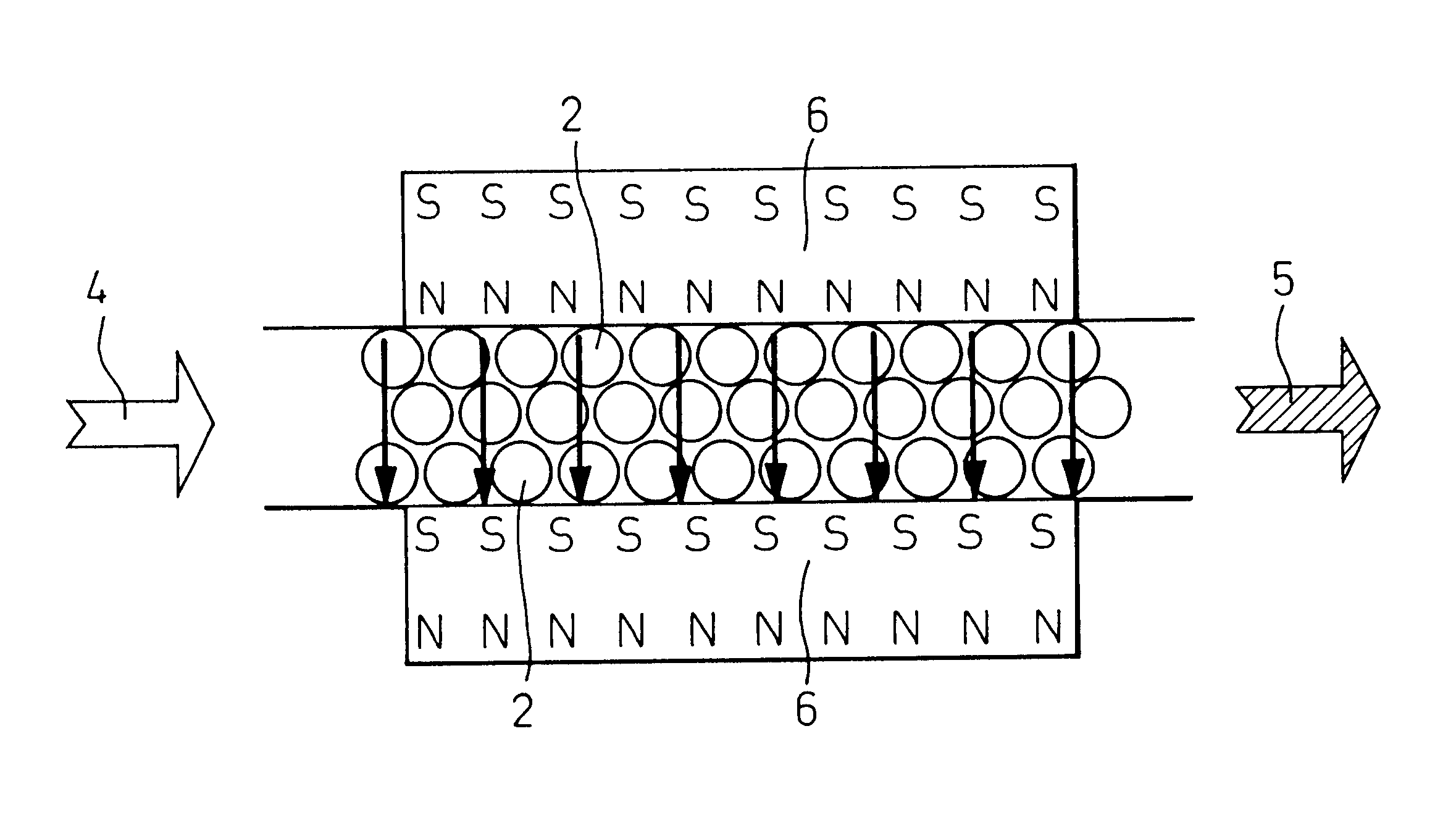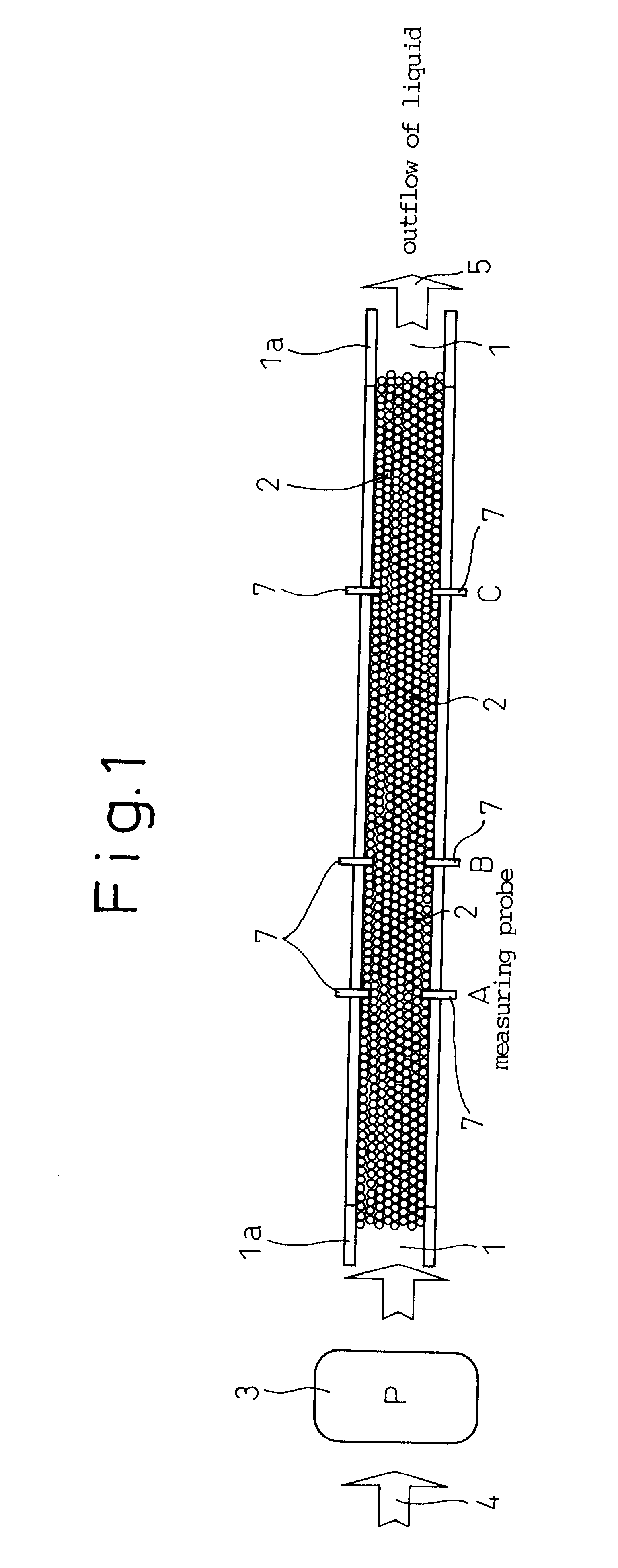Method of reinforcing catalyst reaction
- Summary
- Abstract
- Description
- Claims
- Application Information
AI Technical Summary
Benefits of technology
Problems solved by technology
Method used
Image
Examples
examples 1 to 3
are examples of arranging neodymium magnets (Nd-Fe-B magnets) having surface magnetic flux density of 4,000 Gauss so as to surround a fluid passage which is filled with a semiconductor catalyst in the form of titanium dioxide particles, while a stock solution is sent through the fluid passage under pressure to activate the stock solution through oxidizing and reducing reactions of the titanium dioxide, thereby purifying the stock solution.
In FIGS. 1 and 2, the reference numeral 1 denotes a passage for passing the stock solution, 1a denotes a stainless pipe which forms the fluid passage and is 37 mm wide, 15 mm high and 1,000 mm long with wall thickness of 1.5 mm. The reference numeral 2 denotes titanium dioxide pellets which are an oxide semiconductor, 3 denotes a pump which forces the stock solution 4 to flow through the fluid passage at a low flow rate of 1.9 liters / min. or a high flow rate of 5.4 liters / min., 4 denotes the stock solution to be processed, 5 denotes outflow of a li...
example 1
Denitration Reaction Using Magnetic Field Catalyst
Denitration reaction is verified by measuring the concentrations of nitrous acid and nitric ion in the processed liquid 5 after the magnetic field catalyst processing in cases A, B and C, using the apparatus shown in FIGS. 1, 2 and sodium nitrate solution as the stock solution 4.
1. Sodium nitrate solution having concentration of 10 mg / liter (10 ppm) (maximum permissible concentration for water quality of public water works) is prepared as the stock solution 4.
2. An experimental system similar to that of the test shown in Tables 1-1 and 1-2 is used to measure the nitric acid ion concentration in the processed liquid after the magnetic field catalyst processing by means of high performance liquid chromatography (HPLC), with the specimen being separated, caused to undergo grease reaction and finally quantitatively determined by means of the intensity of color developed through a diazo reaction. In the following description, NOx concentr...
PUM
| Property | Measurement | Unit |
|---|---|---|
| Magnetic field | aaaaa | aaaaa |
| Fraction | aaaaa | aaaaa |
| Fraction | aaaaa | aaaaa |
Abstract
Description
Claims
Application Information
 Login to View More
Login to View More - R&D
- Intellectual Property
- Life Sciences
- Materials
- Tech Scout
- Unparalleled Data Quality
- Higher Quality Content
- 60% Fewer Hallucinations
Browse by: Latest US Patents, China's latest patents, Technical Efficacy Thesaurus, Application Domain, Technology Topic, Popular Technical Reports.
© 2025 PatSnap. All rights reserved.Legal|Privacy policy|Modern Slavery Act Transparency Statement|Sitemap|About US| Contact US: help@patsnap.com



